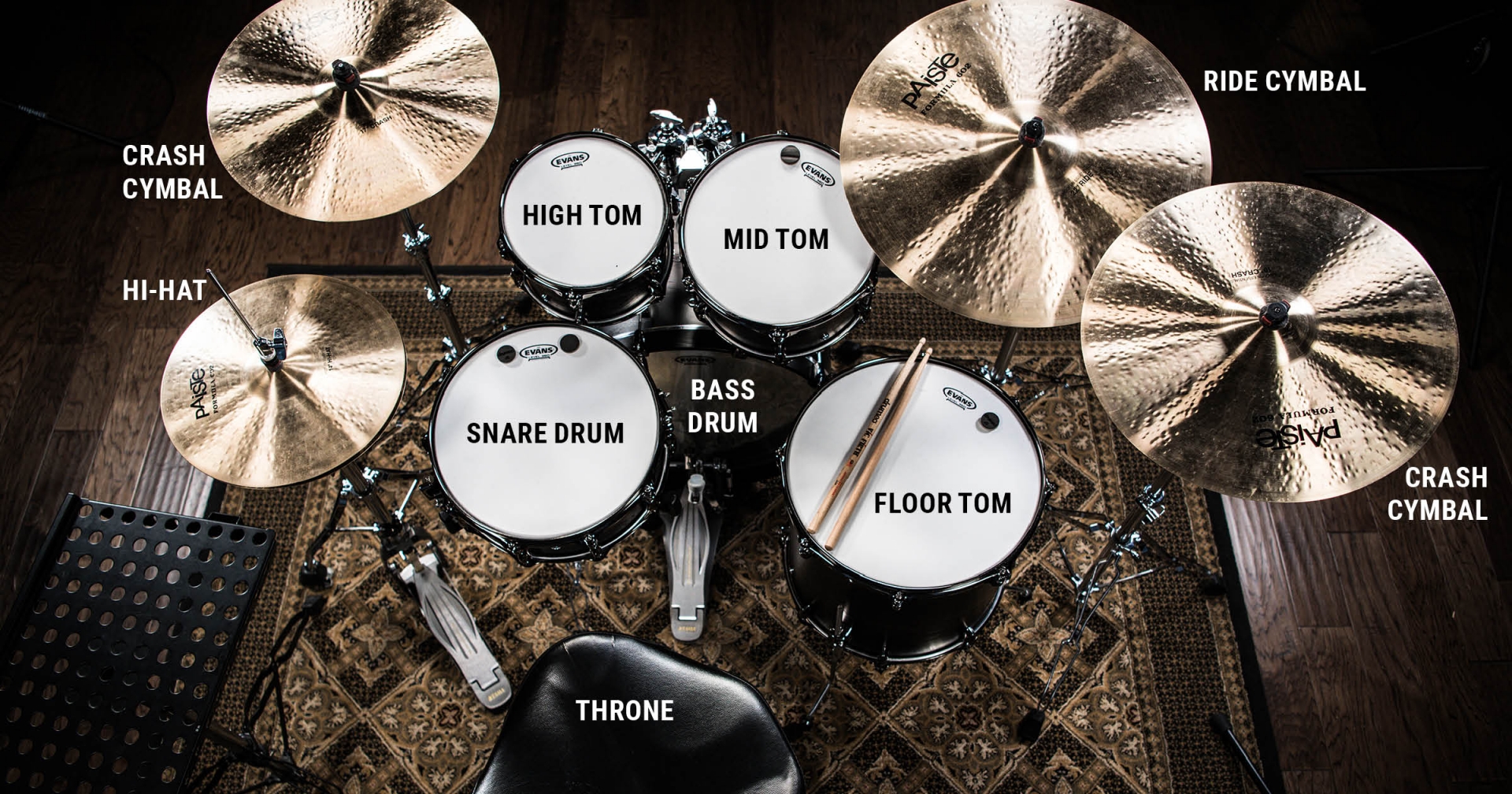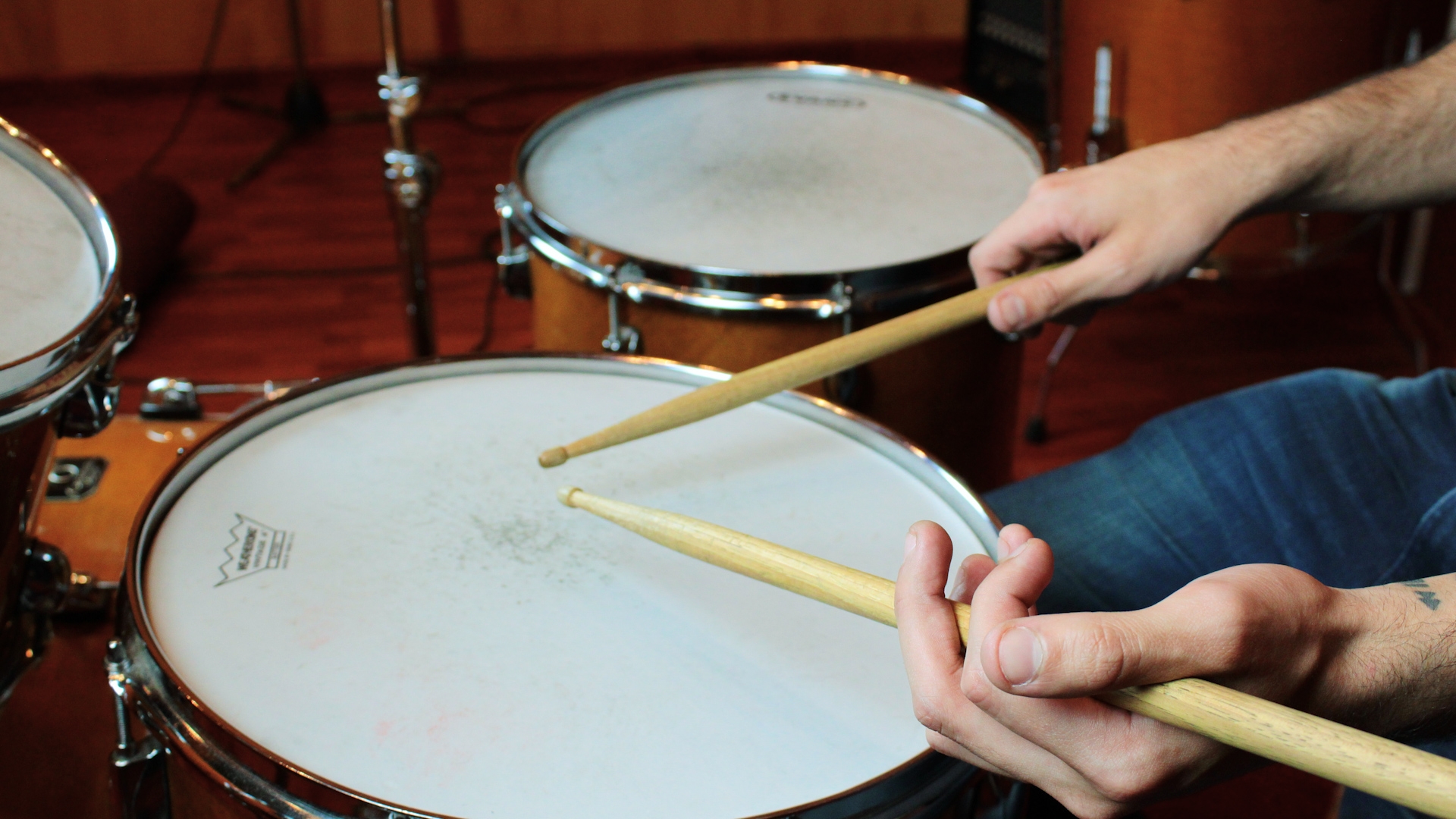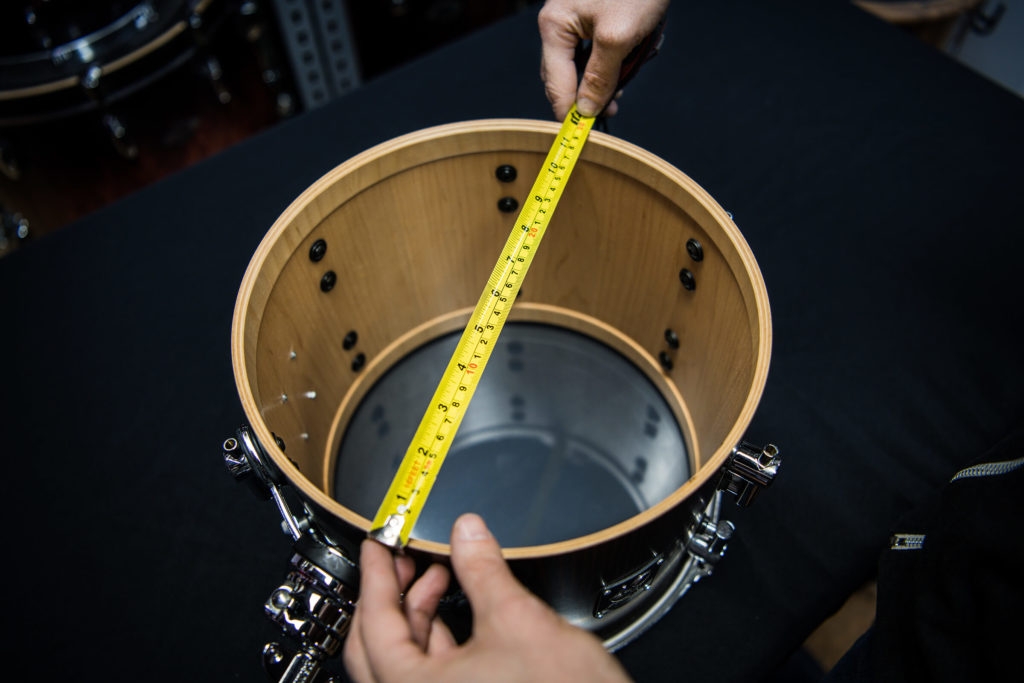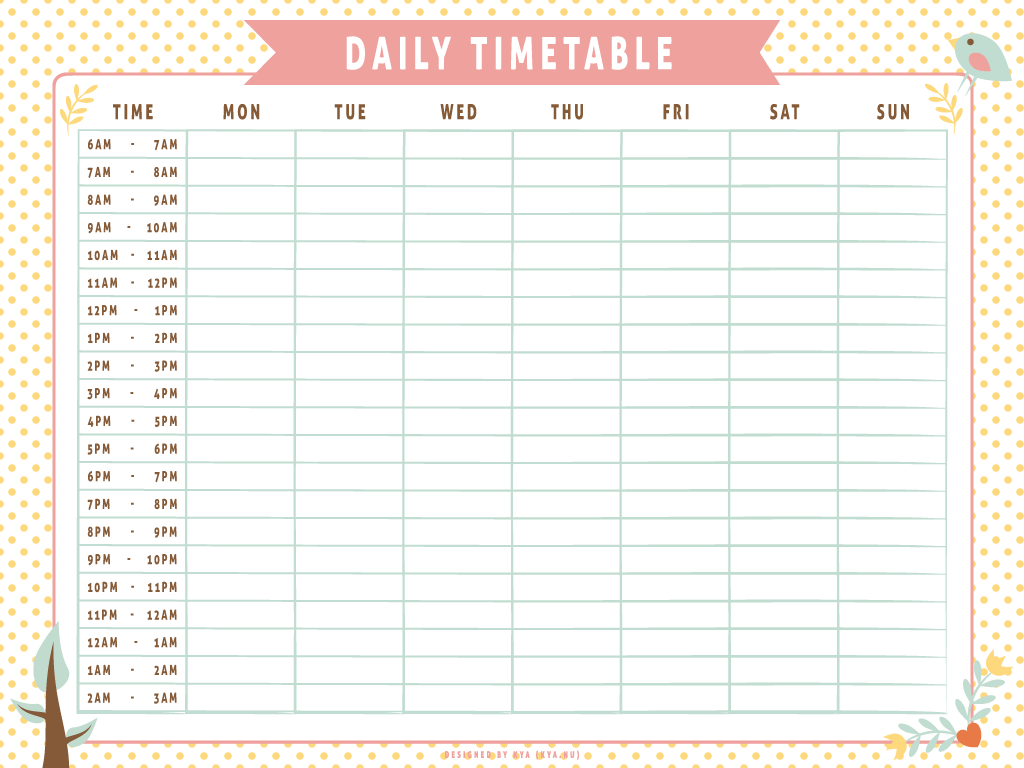How to Play Drums for Beginners
 |
| Photo: drumeo.com |
On top of wondering, “How do you play the drums?” you may be asking questions like, “What are some easy drum songs?” or, “How can I learn to play with a band?”. These easy to follow beginner drum tips will guide you through essential techniques you will need to learn as a drummer.
Know parts of the drum set
Some people call it a ‘drum set’ and others call it a ‘drum kit’. Whatever you call it, the drums are an instrument that has no right or wrong when it comes to how many pieces, and which pieces, you can use to create sound. For the purpose of this guide, we’re going to focus on the essential components to get you started on the drums.
A basic five-piece kit typically includes these drums:
Bass drum
Snare drum
High tom (or first tom)
Mid tom (or second tom)
Floor tom (or low tom)
Bass drum: Also known as a ‘kick drum’, this is the biggest piece of the kit. It rests on the floor, has two small ‘legs’ to keep it in place, and gives your rhythms that low ‘boom’. Drummers use a bass drum pedal (or ‘kick pedal’) with a beater (or ‘mallet’) to strike the surface of the bass drum. Most drummers use a single pedal, but some drummers (especially metal and rock players) might use a double pedal for quick patterns.
Snare drum: This drum sits right in front of you. The snare wires beneath the drum vibrate when you strike it and gives it its signature sound. If you want to change the amount of ‘snare’ sound, this drum has a lever (or ‘throw off’) and dial you can use to adjust the tension.
Tom-tom: Usually abbreviated to ‘tom’, this drum can come in a variety of sizes and is useful when playing drum fills and tribal rhythms.
Hi-hats: The hi-hat is a combination of two cymbals that sit together. They’re mounted on a hi-hat stand, and the stand’s pedal allows the top hi-hat to open and close.
Crash cymbal: These cymbals can come in a variety of sizes and add a burst of sound when punctuating or accenting notes in your drum parts.
Ride cymbal: Rides are usually the biggest cymbal on the kit and they have the biggest surface area. You’re more likely to ‘ride’ (play consistently) on this cymbal, and it has a distinct ‘ping’ sound.
This kit is set up for a right-handed drummer. If you’re left-handed and would like to learn to play leftie, you can reverse this setup so the snare is on your right side. However, if you get used to playing a left-handed kit, it may be harder in the future if you’re ever in a situation where you need to use someone else’s drums.
You’ll also need drumheads (or ‘skins’) for each drum. There’s usually one head on the top (the batter head) and one head on the bottom (the resonant head) that together give the drum its full sound.
Get comfortable holding the drum sticks
 |
| Photo: redison.com |
Of course, you’ll need drumsticks so you can hit the thing. There are two main ways to hold drum sticks, called the matched grip and the traditional grip.
In the matched grip, you hold the sticks between your thumb and index finger a few inches from the bottom of the sticks. Wrap your remaining fingers around the sticks. Be sure the backside of your hands is facing up rather than facing to the side. This method is the most common way of holding sticks, allowing you plenty of wrist control and comfort.
In the traditional grip, you'll hold the stick in your non-dominant hand by resting the stick in the cradle between your thumb and index finger and on top of your ring finger. Wrap your thumb, index, and middle fingers around the stick. Hold the other stick using a matched grip. Some jazz drummers use a traditional grip to offer a different kind of control on the snare drum, playing intricate rhythms on it as part of fills.
How to choose drum equipment
 |
| Photo: drumeo.com |
As a beginner, it’s wise to start with either a new entry-level kit or a well-used kit. Both will be budget-friendly, and you can always upgrade to something better if you move forward with your new hobby. Once you’ve learned how to play drums, you can dial in your perfect sound.
When buying drums, you should know that the bigger the drum (in width or depth), the lower the sound. The same goes for many cymbals: the wider it is, the lower the pitch. But other factors can influence the sound of a drum or cymbal – including thickness – and you’ll learn about different materials and manufacturing methods in the next section.
As a new drummer, how do you know if the drums are good or not? Do drums come in different sizes? When talking about the size of a drum, we use inches to refer to the diameter across the drum (such as a 14” snare drum or a 22” bass drum).
The standard five-piece drum set typically comes in the following sizes:
Bass drum (20”-22”)
Snare drum (14”)
Three toms (12”/14”/16”)
You might also come across 18” or 20” bass drums, 13” snare drums, and 10” or 13” toms.
We use inches to refer to the depth of the drum as well. When shopping for drums, if you see two numbers in the specs for a drum (eg. 14” x 5.5”), the first number is usually the diameter across, and the second number is usually the depth. Since you’re just learning to play, don’t worry too much about the sizes for now.
How to Play Drum Rudiments
Once you have your basic equipment (drum sticks, playing surface) and a good sense of proper technique, you’re ready to start learning the fundamental patterns of drumming, or the simple drum rudiments.
Drum rudiments are often described as the basic building blocks of learning how to play the drums. There are 40 essential rudiments, each of which consists of a unique sticking pattern (coordination of right and left hands) and distinct rhythm. Mastering all 40 rudiments provides you with a wealth of control and rhythmic knowledge that you can then apply to the entire drum set.
Don’t be intimidated about learning all 40 rudiments right away. Here’s a step-by-step video to help you learn the seven essential drum rudiments. As a beginner, these seven drum rudiments will give you a solid foundation and help you learn to play basic drum patterns and songs.
Start Reading Drum Sheet Music
 |
| Photo: sheboygandrums.com |
Now, this is the last and an optional step, since technically you don’t need to know sheet music in order to play the drums.
Drummers are encouraged to learn how to read drum notation. When you understand drum sheet music, it can be used as a drummer’s secret weapon. It’s important for beginning drummers to start with reading very easy drum rhythms before trying to jump into understanding intermediate drum beats.
With beginning rhythms, you should focus only on the coordination of your left and right hands (no feet yet) and ensure that you’re playing in time with a metronome. This lesson introduces basic drum notation in a clear and easy-to-understand fashion. The accompanying audio clips are also extremely helpful.
When you can accurately play exercises that involve two different rhythms with the hands, then it’s time to add the feet. First add your kick drum foot, working on exercises that focus on coordination between both hands and your kick drum foot.
If you’re having trouble coordinating all three limbs, break the exercise down so that you’re only focusing on two limbs at a time. Make sure that you’re comfortable with each limb combination before trying to put all three together again.
Eventually, you’ll also want to start working your fourth limb, the hi-hat pedal foot. Like the other limbs, start with very basic exercises that coordinate all four limbs before trying to learn more advanced drum beats.
How to Read Drum Tabs
 |
| Photo: drumeo.com |
Drum tabs are different from sheet music because they’re written specifically for the instrument. They use the parts of the drum set that we talked about earlier. Drum tabs use abbreviations for the drum parts, for example:
CC – Crash Cymbal
HH – Hi-Hat
Rd – Ride Cymbal
SN – Snare
T1 – Hi Tom
T2 – Low tom
FT – Floor Tom
B – Bass Drum
HF – Hi-Hat (with foot)
O – Bass Drum hits
X – Snare and Hi-Hat hits
Here’s an example of this practice in the “two and four” beat from this article about easy drum beats for beginners. The drum tabs appear as follows:
HH: X X X X
SN: X X
B: O O
These simple drum tabs show you which parts of the kit to use (hi-hat, snare, and bass) and when to play them.
Find a Good Teacher
 |
| Photo: ashlynthia.blogspot.com |
| Locating a good drum teacher is perhaps the most crucial step in order to learn to play drums for beginners. For as much as you can try learning on your own via books you can purchase through online stores – this won’t be as useful as learning from a qualified person at an official local music school. No matter what teacher you hire, it’s crucial you do plenty of research to make sure they fit your needs (learning level) and budget. |
We hope that you can learn to play drums well with the support of this article. If it's effective, tell us to know in the comment section!
 How to manage your time effectively when working from home? How to manage your time effectively when working from home? Have you ever worked from home due to some special situations? Whatever your situation, I believe these below tips will help you manage your time ... |
 How To Involve Your Kids In Household Chores: 7 easy but effective ways How To Involve Your Kids In Household Chores: 7 easy but effective ways Give your children of all ages “important” jobs and responsibilities around the house. But don't let them drag their feet about doing household chores. Instead, ... |
 How to Stay Healthy During Your Vacation? How to Stay Healthy During Your Vacation? A vacation can turn into a burden thinking about the hurdles one must jump over in order to stay healthy. The good news is that ... |


























